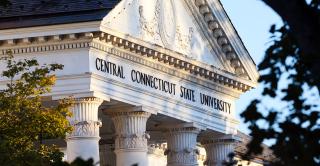
By Amy J. Barry
Even before other educators had begun adding the “A” for Arts to the acronym STEM, Dr. Shelly M. Jones was full-STEAM ahead of the curve.
In Jones’s case, she saw a certain harmony between music and math education. Much had been written about the benefits of adding a music component to math classes at the high school and college levels. Jones, a professor of Mathematics Education at Central, began to examine how such a combination could benefit younger students.
“I wanted to find something that would directly connect with younger kids, around fourth grade, when they start learning both musical notes and how to add and multiply fractions,” Jones explains.
She decided to conduct her own research in collaboration with musician Dunn Pearson Jr. In their 2013 paper, “Music: Highly Engaged Students Connect Music To Math,” Jones and Pearson describe lessons they created and implemented in workshops for middle school students.
Students learned to identify notes and their fractional values before moving on to time signatures and how to determine correct note values per measure. The young students put their new skills into practice with a little motivational help from the music of Miley Cyrus and Justin Bieber. By the end of the workshop, students created four-bar songs — an activity that required a fresh look at the values of each note.
By 2014, Jones had started conducting workshops for teachers that combined math and music and gave students the opportunity to create their own songs.
“Every workshop always sold out and was sitting room only,” she says. “It’s because teachers want to engage students and know how much they like music.”
Culturally relevant math
In addition to making the arts and math connection, Jones, an educator for more than 25 years, is passionate about making math culturally relevant to students.
In a 2016 TED Talk, Jones explains culturally relevant math as another method of engaging and empowering students. It is an idea she incorporates into her coursework at Central, including undergraduate level math courses for pre-service teachers, as well as graduate level math courses for practicing teachers.
“Part of it is respecting and learning about the contributions different cultures have made to math in addition to Pythagoras — the one name people know,” Jones says.
“It’s also about wanting students to develop a positive math identity and not just see it as a procedure, but to realize that a lot of what they’re doing is math.”
For instance, she says, “When you’re scheduling something, estimating mileage, using money — that’s math. And by bringing in popular culture and music, students realize, ‘Wow, math is everywhere.’”
Jones discusses culturally relevant math in further detail in a chapter she co-wrote for the 2015 book “The Brilliance of Black Children in Mathematics: Beyond the Numbers and Toward a New Discourse.”
The book, Jones says, addresses the question “What does a math task look at when it’s both culturally relevant and cognitively demanding?”
“It’s an awesome book I really enjoyed doing,” Jones says, “because we keep hearing about the achievement gap, often between black and white children. But for this book we focused on black children not from a deficit — not from what they don’t know — but from what they do know.”
Jones’s most recent book is for children. Titled “Women Who Count: Honoring African American Women Mathematicians” (2019), it highlights the lives and work of 29 African American mathematicians. It was inspired by the book and film “Hidden Figures” and a coloring book a colleague created about women scientists.
“She told me I should do one about mathematicians,” Jones says. “I wanted it to be a math activity book, so I wrote bios about the women and made up activities to go with their math — fun activities that don’t need a teacher to teach it to you first. It’s a book that students can just pick up and do without a teacher, maybe while riding in the car to grandma’s house.”
Jones reports the book became a bestseller less than a year after its release.
How it all adds up
When she isn’t teaching or presenting at conferences around the country, Jones serves on various committees at the state Department of Education. She also is president-elect of the Benjamin Banneker Association, a national organization advocating for excellence in teaching and learning for African American children, and a frequent speaker at National Council of Teachers of Mathematics conferences and events. She also spoke at the 2020 virtual conference in mid-November.
Jones’s many accomplishments earned her national recognition from the Network of Minorities in Mathematical Sciences as one of its 28 “Mathematically Gifted & Black” honorees for 2019.
The COVID-19 pandemic has changed the nature of Jones’s many community engagement and outreach efforts, but she remains an active voice in her field. She is now writing a full book with Dr. Lou Edward Matthews and Dr. Yolanda Parker, her co-writers on the chapter in “The Brilliance of Black Children in Mathematics.”
"It’s more of a framework to help teachers; an extension of the chapter,” she explains. “But it will provide a lot more resources for teachers who want to do this kind of work.”
She also has applied for a number of grants, including one successful application that funded books and resources to incorporate culturally relevant teaching into the coursework at the university. A grant also funded Jones’s proposal to provide her books to students in New Britain and Hartford public schools and to additional schools in Texas and Georgia.
In describing her teaching philosophy, Jones quotes mathematician Cred Dobson who said, “In our classrooms, we don’t teach math, we teach children.”
Jones’s own equation for that method features a few additions.
“We want to empower them,” Jones notes. “We want them to be academically successful. We want them to be culturally competent.”


